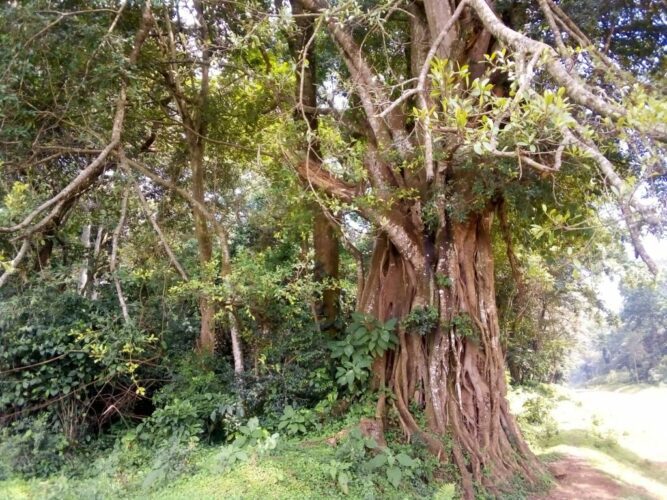Kakamega Forest, East Africa’s remaining tropical forest.
Read 3 minutes
Africa harbors almost 30 percent of the world’s global rainforests, ranking second only to the Amazon in Brazil.
Kenya’s Kakamega Forest stands as East Africa’s remaining rainforest, a fragment of the once-vast Congo-Zaire Forest that stretched from the Atlantic Ocean to the western part of Kenya.
Tropical rainforests, characterized by their warm and humid climates, are typically situated near the equator. Other notable rainforests on the continent include the Congo Basin in Central Africa, which is the second-largest global rainforest and covers nearly 300 million hectares of primary rainforest. Additionally, the Eastern Afromontane, the Coastal Forests of Eastern Africa, Madagascar’s forests, and the forests of the Indian Ocean Islands are significant.
However, akin to other African tropical forests, Kakamega Forest faces the imminent threat of losing its native trees and megafauna due to human activities, fueled by one of the largest rural populations globally. In response, authorities are actively engaged in an ambitious conservation initiative dedicated to safeguard this ancient and invaluable forest ecosystem.
Branice Wanyonyi, acting Kakamega County Forest Conservator, states that they have initiated a project to enclose this natural ecosystem. “Currently, we are rehabilitating the degraded parts of Kakamega Forest. We are collaborating with various organizations to ensure the restoration of the area to its original state.”
Conservation efforts in Western Kenya involve incorporating communities residing near the tropical forest. The Muliru Forest Association actively participates in planting indigenous tree seedlings, contributing nearly 5,000 annually to the Kenya Forests Services to enhance forest cover.
Taking advantage of the carbon credit market, where international organizations compensate for their greenhouse gas emissions, Kakamega County Environment minister Peninah Mukabane notes that they are educating the community on conservation and profiting simultaneously from this rainforest. “Various organizations, including UPLIFT-Network, USAID, South Pole, and others, have come forward. South Pole, for instance, assists us in capacity building by teaching people how to calculate carbon credits and benefit from carbon credit markets.”
Africa’s tropical rainforests serve as critical carbon sinks and provide essential ecosystem services for human well-being, including water, forest products, and hazard prevention. As climate change emerges as a global concern, rainforests in Africa attract significant attention from both national and international conservation efforts.
In 2015, African countries launched the African Forest Landscape Restoration Initiative (AFR100), committing to restore 100 million hectares (250 million acres) of degraded forests and landscapes by 2030. A progress report in June 2022 indicated that nations had put 917,014 hectares (2.27 million acres) under restoration between 2016 and 2021, with 63 percent allocated to agroforestry.
Experts emphasize the need for decisive action to address deforestation, a substantial threat to these restoration initiatives.
Post Views: 1,493
Source link : https://africa.cgtn.com/preserving-east-africas-ancient-guineo-congolian-tropical-rainforest/
Author :
Publish date : 2024-01-03 08:00:00
Copyright for syndicated content belongs to the linked Source.
